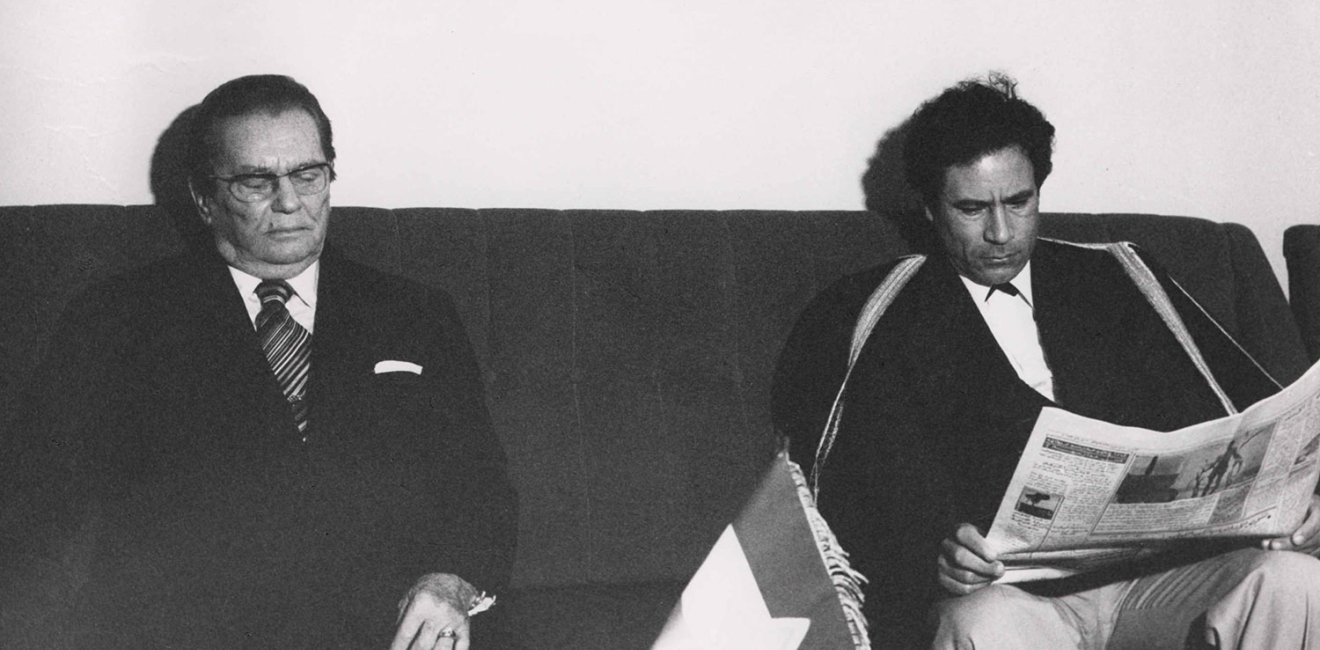Yugoslavia is Gone, But Its Archives Remain
The archives in Belgrade are an untapped source for Cold War history.

A blog of the History and Public Policy Program
The archives in Belgrade are an untapped source for Cold War history.

The archives in Belgrade are an untapped source for Cold War history
The archives in the former Yugoslavia are one of the least utilized source bases for Cold War history. Quite undeservedly so, because the records of Yugoslavia’s multifaceted foreign policy provide a wealth of information about the Global Cold War.
In the fall of 2016, I spent over five weeks in Belgrade, Serbia, in the Archives of Yugoslavia and the Diplomatic Archive of the Ministry of Foreign Affairs of the Republic of Serbia, completing research for my dissertation on US-Yugoslav relations from 1968 to 1980 in the context of the global Cold War.
There are at least several record groups at these two archives which should be of use to Cold War historians—as long as they can heed some practical advice before making the trip to Belgrade.
The Archives of Yugoslavia
The Archives of Yugoslavia (AJ) is the main depository for records produced by various institutions of the Federal People’s Republic of Yugoslavia (until 1963) and the Socialist Federal Republic of Yugoslavia (from 1963 to 1991).
Records at the AJ are organized in to fonds (or record groups) based on the creating agency or department. The archives’ website provides a list of fonds in both English and their original language—usually Serbian, Croatian, or Bosnian. Unfortunately, only a small number of fonds include a fuller online inventory. Records at the AJ are fairly complete, with the exception of several fonds that were destroyed during the NATO intervention in 1999.
For Cold War scholars, the most important fonds are 836 (Marshall of Yugoslavia’s Office, until 1953) and 837 (Cabinet of the President of the Republic, until 1980), both of which contain documents related to President Tito’s foreign policy activities.
Fond 837 is divided into sub-fonds, such as country files, Tito’s travels abroad, foreign visits, international meetings, and conferences. In these sub-fonds, researchers will find memoranda of Tito’s conversations with foreign leaders, various policy memos, and high-level diplomatic correspondences. For example, I came across unredacted stenographic notes of conversation between Tito and Brezhnev from 1971, 1973, 1976, and 1979. These documents highlight the vicissitudes of the Yugoslav-Soviet relationship, address doctrinal differences in the international communist movement, and reveal divergences on issues such as détente, the Sino-Soviet split, crises in the Middle East and the Horn of Africa.
In addition to Tito’s records, I found Fond 507 (the League of Communists of Yugoslavia) and its sub-fonds, 507-III (the Presidency of the LCY) and 507-IX (the Commission for Foreign Relations), quite enlightening. Documents from the two sub-fonds are particularly important for researchers examining intra-communist relations. Furthermore, the Presidency of the Party often discussed sensitive foreign and domestic policy issues. Fond 803 (the Presidency of the SFRY) and Fond 130 (Federal Executive Council) also contain records about various foreign policy issues.
A final record group I found particularly useful was Fond 142 (The Socialist Alliance of Working People of Yugoslavia). The Alliance, the largest mass organization in the SFRY, dealt with, among other things, decolonization and liberation movements abroad and interacted with progressive parties throughout the Third World. The materials in Fond 142 may be especially useful for researchers studying decolonization who have encountered a shortage of relevant documents in Africa, Asia, and the Middle East.
There are no special procedures to get into the archives; an e-mail with a short description of your project and dates of your visit is sufficient.
My research experience at the AJ was very positive. By putting in some long working hours, I was able to accomplish a lot over a relatively short period. In addition, the staff is very helpful and accommodating. Digital cameras and laptops are allowed (though researchers should keep in mind that the archive charges approximately 20 dollars per day for using a camera). For details about these and other policies, I recommend the AJ’s website, which provides much useful information.
Finally, I have two tips for researchers. First, the archive has not digitized its collections, though they do sell volumes that include their records as well as documents from archives abroad. Although the records in these volumes are fragmentary, they are nevertheless useful.
Second, visitors should take advantage of the archive’s location and take a stroll to Tito’s Tomb and the Museum of Yugoslav History that are located nearby. The museum is a treasure trove for visual historians, with artifacts from Tito’s era and over 130,000 of photos related to Tito’s life and his trips abroad.
The Diplomatic Archive
The Diplomatic Archive of the Ministry of Foreign Affairs (DA) offers a different research experience from that of the Archives of Yugoslavia.
Obtaining permission to conduct research at the DA is much more cumbersome. Foreign citizens need to obtain the approval of the Minister of Foreign Affairs, a process that can take anywhere from three months to an entire year. The archive’s website provides guidelines for prospective researchers.
Though researchers may access up to four boxes (like in the AJ), they may only use the reading room for four hours each day. Digital cameras are not allowed, which makes research at the DA a burdensome task. Researchers can either take notes (laptops are allowed) or order photocopies for around USD $0.10 per page. But visitors should keep in mind that photocopies will not be immediately available.
Despite these difficulties, the DA contains invaluable records about Yugoslav foreign policymaking: diplomatic correspondence from and to Yugoslav embassies and consulates, policy memos and intelligence reports, and memoranda of conversation, to name only a few kinds of materials. For example, I found documents that shed light on Yugoslav policy in the Horn of Africa. Records show that in 1977 Yugoslavia and Lybia worked in concert to aid the Mengistu regime. This and other evidence about how small states tried to influce the global Cold War I found particularly important for my own research.
Documents are divided into two categories: Political Archive (PA) and Top Secret. The Political Archive is arranged on a chronological and country basis (for example PA 1976, USSR). The Top Secret files are also arranged chronologically, but without country designation. Both PA and Top Secret groups are declassified. The archive follows a “30-year rule,” so anything from after the mid-1980s is not yet available.
An Untapped Source for Cold War History
One of the reasons the archives in Belgrade have stayed off the charts of Cold War historians is that materials are exclusively in Serbian/Croatian/Bosnian. Therefore, research in these institutions is impossible without some basic knowledge of the local languages. This type of limitation raises again the importance of language education for all those interested in the global Cold War.
But whatever the obstacle, I am certain that Yugoslav archives are essential to the study of Cold War history. They are open and largely accessible to researchers. Their records provide a good vantage point to observe policymaking, not only of the Yugoslav state but also of those nations whose archives are for now inaccessible or too expensive to visit.


A leader in making key foreign policy records accessible and fostering informed scholarship, analysis, and discussion on international affairs, past and present. Read more


The Cold War International History Project supports the full and prompt release of historical materials by governments on all sides of the Cold War. Read more



